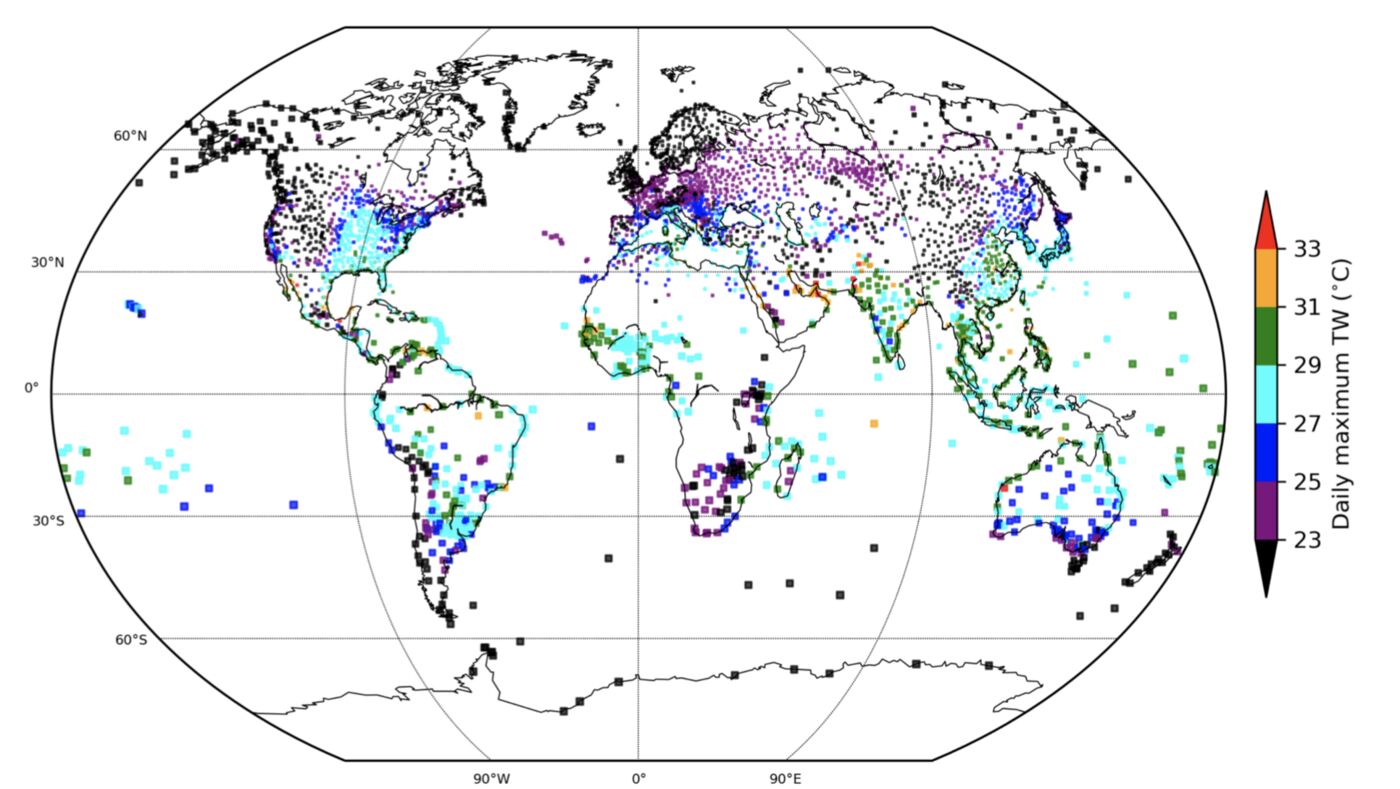Climate scientists have previously warned that a lethal combination of heat and humidity will make currently inhabited parts of the planet uninhabitable for months at a time in the decades to come. New research finds that future is now. The study—published in the journal Science Advances on Friday under the vivid title “The emergence of heat and humidity too severe for human tolerance”— found the Persian Gulf, along with parts of Pakistan, is already susceptible to novel severe events.
The researchers found that conditions briefly crossed into the danger zone—a combined heat and humidity, or “wet-bulb temperature,” of 35°C—on 14 occasions, according to 40 years of hourly data. Readings of 33°C have come 80 times, and 31°C have occurred about 1,000 times, reaching beyond the Middle East and southern Asia.
Dozens of extreme events have occurred along the U.S. Gulf Coast, including New Orleans and Biloxi, Mississippi.
When heat and humidity produce a wet-bulb temperature of 35°C, the body passes a “survivability threshold,” said Radley Horton, an associate research professor at Columbia University’s Earth Institute and a co-author of the study. It’s theoretically the point when humidity and heat prevent skin from being able to cool off by sweating, causing the body to overheat, potentially fatally.
“Conceptually, this is a really powerful, scary idea,” Horton said. It’s “the notion that the combination of heat and humidity could be so extreme that a perfectly fit person, sitting in the shade, not moving at all, endless supply of water, either unclothed or wearing perfect clothes for sweating, would not, thermodynamically, be able to sweat fast enough to avoid overheating and getting heatstroke.”

The Gulf of California, the Gulf of Mexico, the shores of the Red Sea and India’s Southern coast will also suffer from dangerous wet-bulb events decades ahead of previous projections, the researchers found.
